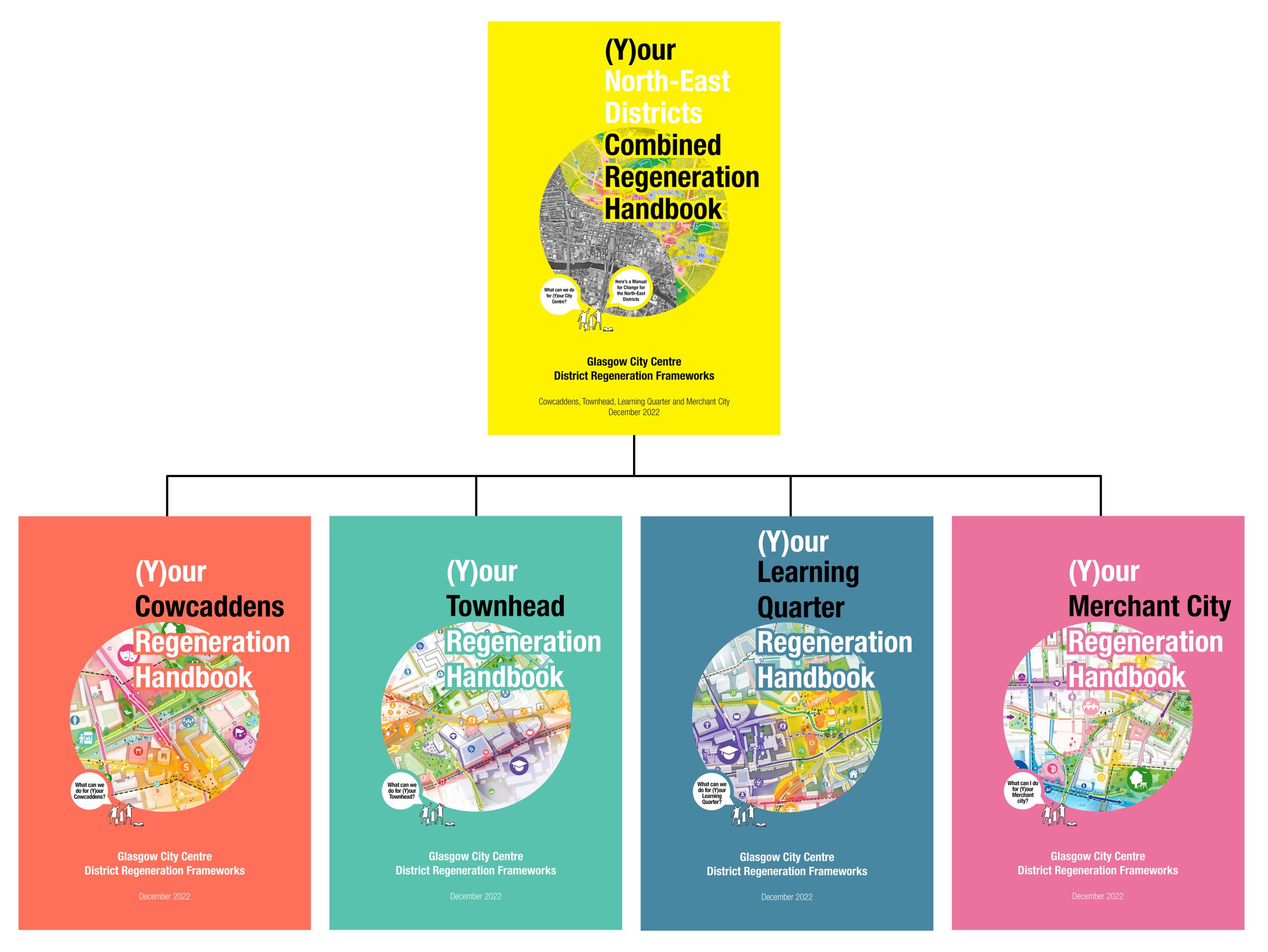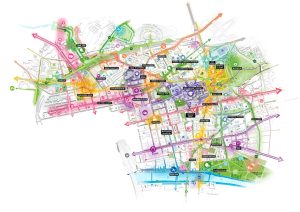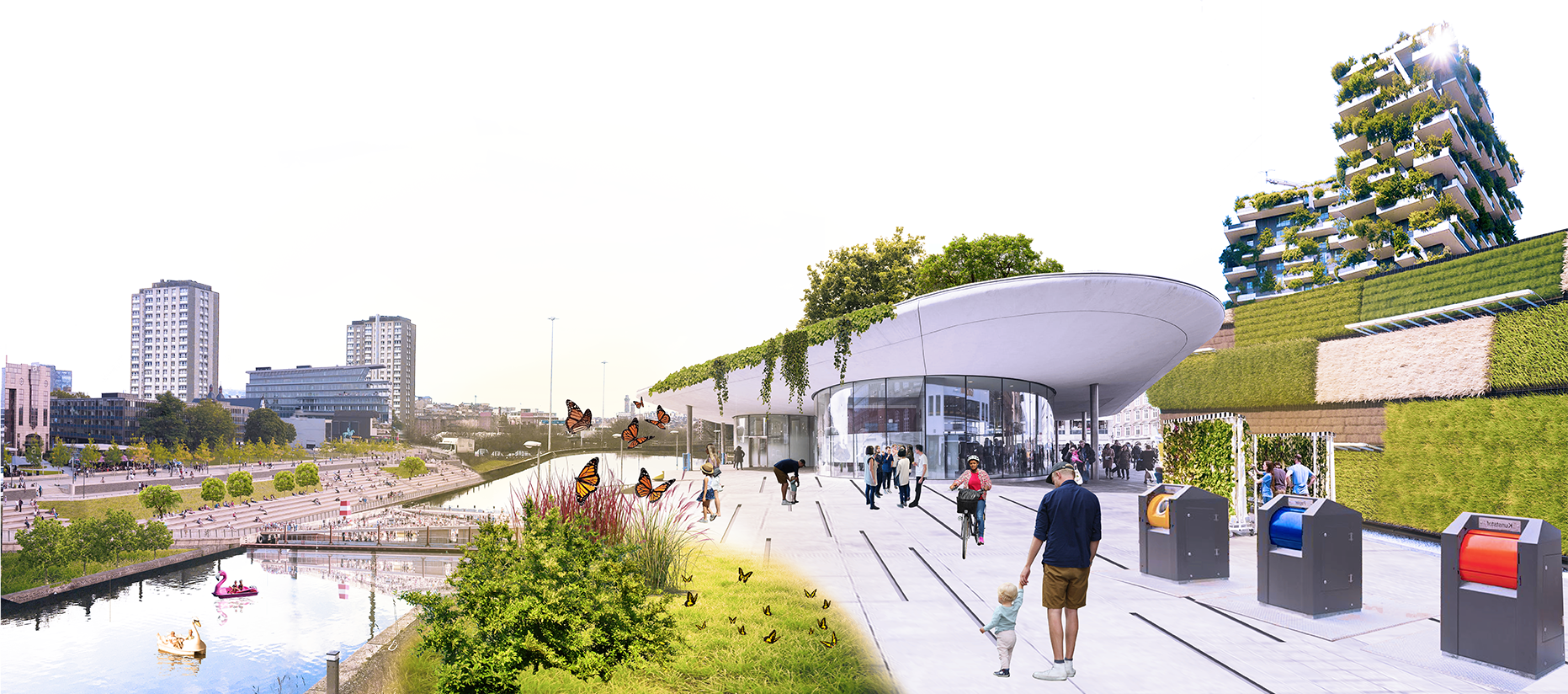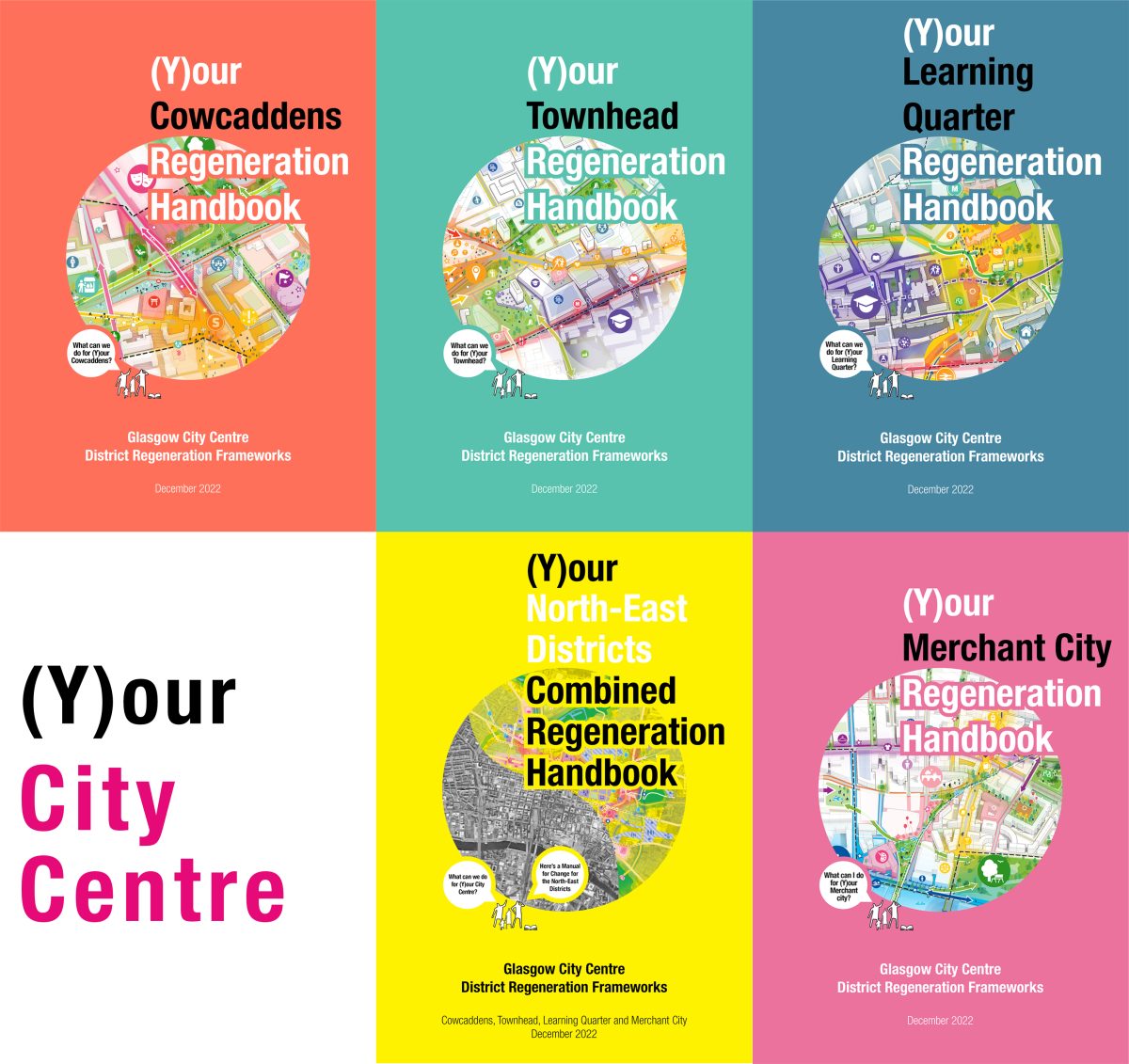
(Y)our City Centre Consultation:
Glasgow’s District Regeneration Frameworks published
Regeneration Frameworks for 4 of Glasgow City Centre Districts are being published online for final consultation. These Districts comprise the north-east half of central Glasgow and complement the 5 District Regeneration Frameworks (DRF) already approved by Glasgow City Council.
The 4 draft DRFs and the draft North-East Districts Combined Strategy reports are available here > https://www.glasgowconsult.co.uk/KMS/dmart.aspx?strTab=PublicDMartCurrent&NoIP=1
Anyone with an interest in the future of Glasgow city centre is encouraged to participate in this online consultation which is open from 20 January until 3 March 2023, with survey details available via this link > https://www.glasgowconsult.co.uk/project/909
District Regeneration Frameworks > Handbooks for Change
Austin-Smith:Lord have led the team appointed by Glasgow City Council to prepare these 4 District Regeneration Frameworks, alongside Studio for New Realties and in collaboration with a multi-disciplinary team listed below.
This follows on from Austin-Smith:Lord leading the preparation of the previous phase of 4 DRFs for Broomielaw, Blythswood, St. Enoch and Central Districts, alongside MVRDV and a multi-disciplinary team. These were adopted by Glasgow City Council in 2019/20 and are available online (see link).
These DRFs are 10-year regeneration plans with a series of short, medium- and long-term actions that combine strategic planning and placemaking with shorter-term operational and environmental improvements. The frameworks were developed over an 18-month period based upon an evidence base, tested throughout the process by community and stakeholder engagement. Almost 11,000 people have participated in DRF engagement so far.
Each District Regeneration Framework is intended to be a Handbook for Change setting out practical steps to enhance everyday quality of life for those who live, work, study in and visit the City Centre.
The Handbooks are focused on encouraging action and enabling partnership working to deliver sustainable change in each place. Action Plans suggest who should work with whom to make change happen and how to align projects with funding and investment.

The North-East Districts
The 4 Districts being consulted on now cover 280 hectares of Glasgow City Centre comprising Cowcaddens, Townhead, the Learning Quarter (including the Universities, College, Infirmary and Cathedral), and Merchant City (with Calton / Barras).
Many of these Districts have been under appreciated, or overlooked in recent times. Nevertheless this half of central Glasgow has amazing attributes, assets and great potential to contribute to a distinctive, sustainable, vibrant and healthy city centre.
The Handbooks cover getting the basics right – ensuring we look after what we have and support and nurture existing positive activity – as well as considering projects from large scale and ambitious to smaller scale, local quick wins.

Transforming the North-East Districts
Across all of the Districts there are recurring themes and objectives and these are set out in a Combined Handbook. Headline objectives include;
Living Well, Locally – supporting and enhancing neighbourhoods, so that existing communities have convenient access to local services and amenities supported by new residents attracted to live in quality, mixed tenure city centre housing
Working with What We Have – appreciating, restoring and reinterpreting our heritage and repurposing under occupied spaces and buildings to support new and mixed uses, nurture local and diverse culture and celebrate these distinctive Districts
Collaboration, Culture and Creativity – maximising the potential of existing anchor and cultural institutions including the Universities, College, Arts School and Conservatoire, Infirmary and Cathedral quarter, creative industries and the climate neutral Innovation District to sustain positive change in the local area
Supporting a Diverse Economy – creating a mixed use city centre that is sustainable and resilient – nurturing existing businesses and creative innovators – to support a thriving local economy that plays to existing strengths, creates and sustains new skills and jobs
A Dear Green Place – improving open and green spaces, and transforming vacant and derelict land, to connect communities, provide access to restored nature and promote health and wellbeing
Dissolving Barriers and Connecting Communities – restoring lost connections between the City Centre, the East End and North Glasgow by rejuvenating the High Street and public spaces, dissolving the severance caused by the M8 and extending the Great Streets linking the City Centre to surrounding communities
Sustainable Mobility – promoting walking, wheeling, and cycling with seamless, safe and attractive path networks to create (S)low Traffic Neighbourhoods and enhancing the city’s integrated public transport systems to enable convenient access to the City Centre for all
Climate Change and Infrastructure – embedding sustainable infrastructure, circular economy and planning principles to deliver integrated digital and clean energy networks, nature-based solutions and retrofitting the Districts to contribute to a net zero city centre.
Distinctive Districts – proposing place-mending through careful interventions that appreciate and celebrate the distinctive identity of each District, their role in the city region and how they can retain what makes them special whilst contributing to a thriving and sustainable City Centre.

Councillor Angus Millar, Convener for City Centre Recovery at Glasgow City Council, said: “The eastern and northern areas of our city centre are home to some of our more established residential communities, learning institutions and businesses, but they also have so much potential for positive regeneration.
These District Regeneration Frameworks will help guide future development and investment, and the final Action Plan will ensure that activity is taken forward in a way that complements regeneration happening elsewhere in the city whilst building on each district’s unique character.
As such, it is important that local people, organisations and stakeholders take part in the new public consultation and help determine what the priorities should be for the future of these key city centre districts.”
Graham Ross, CEO at Austin-Smith:Lord and Lead Consultant for the (Y)our City Centre DRFs project, said: “These District Regeneration Frameworks are intended to be handbooks to guide positive change in Glasgow city centre. A thriving, attractive and sustainable city centre is vital for Glaswegians, and for the economic, social and cultural health of the city region and Scotland.
Each Handbook seeks to identify projects and actions that should be progressed to enhance the everyday quality of life in these Districts. They have been prepared in collaboration with local communities; resident, business, charities, civic and cultural groups, landowners and developers, local and national agencies.
Anyone who lives, works, studies in or visits the city centre or has a passion and interest in Glasgow is invited to engage in this final round of consultation. Please share your ideas, offer support and indicate how you can help play a part in delivering the changes necessary to ensure Glasgow thrives in the 2020s and beyond.”
(Y)our City Centre Team – Phase 3 (2020-22)
Glasgow City Council City Centre Regeneration: Client
Austin-Smith:Lord: Lead Consultants / Local Urban Design (Urbanism, Landscape, Architecture)
Studio for New Realities: Urban Strategy / Design Lead
Urban Movement: Urban Mobility, Transport Planning, Active Travel
WAVEparticle: Creative Community Engagement
Stantec: Economic Consultants
Ryden: Property Advisers
Useful Projects: Urban Sustainability
Space Syntax: Spatial Economics / Data Analysis
Civic Engineers: Sustainable Engineering
Further information on the project can also be found at the link below:
(Y)our Future City Centre : after COP26, Glasgow starts here
